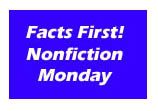
From there we see life in New York's poor immigrant neighborhoods, how the livelihoods of the immigrants back in the home country affected what jobs they took in America, how insulated the neighborhoods were, and how textile factory work became the position of choice for young immigrant women.
And then comes the terrors of factory life, and the nightmare that was March 25th, when the fire broke out just before closing time. Marrin provides plenty of contemporary accounts, from brief quotations from witnesses to longer excerpts of written accounts. When I told my husband I was reading a book about the Triangle Fire his response was "Another one? Don't you know everything?" But there was a lot here I didn't know. For example, I knew the fire escape quickly proved to be useless, tearing away from the building under the weight of the terrified workers. What I didn't know was the fire escape was never truly designed to be useful - it ended directly over a skylight in the roof of the next building, and was surrounded with a fence topped with four-inch spikes. If falling from the fire escape didn't kill someone, landing on those spikes did.
Marrin ties the story of the Triangle factory into today, looking at the governmental corruption that was overcome in order to ensure some basic workplace safety and the right for workers to unionize (a right that is, of course, under attack again today). Marrin also looks overseas to modern sweatshops in Asia, looking at the ethical implications of boycotting sweatshop labor, since the women who work in these factories have so few other options. (For an alternative view, that I don't think will be presented in YA lit anytime soon, no matter how "dark" we're getting, check out this recent Slate article)
I appreciate that Marrin hasn't white-washed history. When explaining the ethnic makeup of the workers at the Triangle factory, he notes right away that African-American women were absent due to racism. And then during the Uprising of 20,000, he brings up the important decisions African American women had to make regarding their own opportunities for job advancement.
The Triangle Factory Fire was such a pivotal moment in American history, it's a shame it isn't taught about more often, and that the names of those associated with it have been generally lost. I'm so thankful that Marrin introduced me to Clara Lemlich through this book - she was a tireless labor organizer during the Uprising of 20,000 (a massive garment worker strike that ended a few months prior to the Triangle Fire), she was blackballed from the industry afterwards, but continued to dedicate her life towards social welfare and became what we now call a community organizer. She was so bad ass, that even when she was in a nursing home in her 80s, she encouraged the orderlies to organize and form a union! What an amazing person.

This week's Nonfiction Monday is hosted by Chapter Book of the Day. Be sure to stop by and check out the other great nonfiction titles highlighted this week!